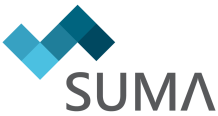Data Exchange Layer by Suma Soft:From PDFs to Tokenized, AuditableAPIs—Built for DPI and SeamlessAdoption
Enable fast, secure, and consented data sharing across ecosystems.
What the Data Exchange Layer Solves
- Eliminates Manual Processes: Replaces PDFs, CSV exports, and emailexchanges with structured, real-time data pulls upon customer consent.
- Ends Screen Scraping: Secure, tokenized APIs with granular scopes offersafer, auditable alternatives.
- Speeds Up Decisions: Enables underwriting, KYC updates, and onboardingin minutes, not days.
- Enhances Trust and Compliance: Consent-driven, time-bound, revocableaccess with full audit trails reduces regulatory risks.
- Future-Proofs Ecosystems: Open standards, certifications, and schemassupport cross-sector services, data portability, and new use cases withoutconstant reworks.
Core Concepts
Neutral Consent Manager
Global ID Index
Standardized Schemas
Tokenized, Auditable Delivery
Typical Use Cases
Credit Underwriting
SME and Merchant Services
Insurance
Wealth and Personal Finance
Compliance and Verification
Healthcare and Public Services
Architecture at a Glance
Presentation and Consent Layer
- Dashboards for users to manage consents, approvals, and revocations.
- Strong authentication, step-up for sensitive data, clear purpose displays.
- Receipts detailing purpose, scope, duration, and policies.
Exchange Core
- Authorization and Token Service: Issues constrained tokens; enforces scopes and bindings.
- Global ID Index: Maps identities privately across providers.
- Schema Registry: Maintains versioned API contracts and change logs.
- Routing and Delivery: Handles connectors, throttling, retries, and webhooks.
- Observability and Audit: Tracks metrics, logs, and consent correlations.
Provider and Consumer Adapters
- Provider Connectors: Normalize data to schemas; sign responses; manage limits.
- Consumer SDKs: Offer typed clients, pagination, and retry policies for integration.
Security and Privacy Controls
- Mutual TLS, signed requests, constrained tokens, anti-replay measures.
- Minimized data with field redactions; encryption in transit/rest.
- Residency options and consent-tied deletion schedules.
Operating Model and Governance
Rulebook and Roles
Scope Catalogs
Certification
Dispute Handling
Change Management
End-to-End Flow
- Request: Data User specifies purpose, scope, duration, and frequency.
- Consent: Customer authenticates, reviews, and approves/denies via ConsentManager.
- Tokenization: Exchange issues scoped tokens; Global ID index mapsidentities; receipt logged.
- Data Fetch: Exchange retrieves normalized data from Provider and deliversto User.
- Revocation/Expiry: User revokes or consent expires; tokens invalidate; flowsstop.
- Audit: Events (requests, approvals, pulls) are logged for compliance.
Why Choose Suma Soft

Interoperable, open designs for shared ecosystem
rails.
Consent Manager and Global ID index streamline
rights and identity.
Financial-grade protections with zero-trust principles.
Schemas, SDKs, and tests accelerate integration.
Guides, UX assets, and toolkits ensure active data flows.
Implementation Roadmap
Phase 1
Strategy and Blueprint
- Define scopes, purposes, SLAs, and schemas.
- Minimized data witavh field redactions; encryption in transit/rest.
- Establish security baselines (mTLS, signing, logging).
Phase 2
Build and Integrate
- Deploy token services, consent ledgers, ID index, registries.
- Build connectors, SDKs, sandboxes, and dashboards.
- Harden security protocols.
Phase 3
Pilot and Certify
- Test with select providers/users; validate UX, tokens, webhooks.
- Run conformance tests for schemas and revocations.
- Adjust limits and policies based on results.
Phase 4
Scale and Govern
- Onboard more participants; expand data categories.
- Enable recurring consents; schedule schema and security reviews.
- Publish ecosystem metrics.
Data Products and Schemas

Interoperable, open designs for shared ecosystem
rails.
Amounts, merchants, categories, IDs.
Periods, summaries, fees, artifacts.
Business IDs, turnover, contacts.
Income, balances, receivables with provenance.
Schemas are versioned with constraints and error models for reliable
integration.
Security, Privacy, and Reliability
- Authentication: Strong customer authentication; token constraints.
- Integrity: mTLS, signed responses, nonce checks.
- Minimization: Scoped fields; redacted sensitive data.
- Lifecycle: Consent-tied expiries and deletions; residency compliance.
- Resilience: Breakers, retries, idempotency for stability.
- Auditability: Logs, receipts, versioning for regulatory needs.
Success Metrics to Track

Interoperable, open designs for shared ecosystem
rails.
Active consents, delivery times, error rates.
Revocation speed, off-scope rejections.
Reduced manual requests, faster decisions, approval lifts.
Receipt completeness, audit passes, incident resolution.
FAQs
Is this just an API gateway?
No, it integrates consent governance, identity resolution, schemas, and certificationsfor secure, interoperable exchanges.
Can we start small?
Yes, begin with key providers and datasets, then scale with standardized adapters.
What happens on revocation?
Tokens invalidate instantly, scheduled pulls halt and events are logged.
How to align data models?
Adapters map provider data to canonical schemas and registries managecompatibility.
Does it replace existing systems?
No, it enhances them with consented, auditable data feeds.
Ready to Transform Data Sharing
Planning a DPI-grade Data Exchange Layer?Engage Suma Soft for expert consulting on implementation—from consent andidentity frameworks to tokenized APIs, certifications, and versatile use cases. Let’sbuild secure, scalable data flows that are globally aligned and locally impactful.
